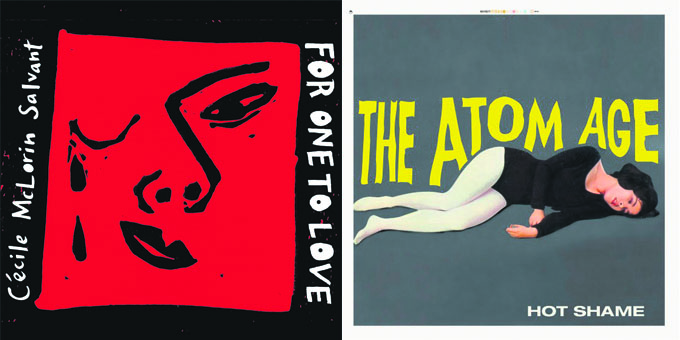Cécile McLorin Salvant – For One to Love
Cécile McLorin Salvant’s transformative vocals in For One to Love contain the essence of that known-to-many skill acquired in teenage years, of putting out your cigarette, waving away the smoke, and stopping your cough before your parents’ steps reach the door. The 2015 album showcases the way the artist effortlessly transitions from tobacco-induced growls to sweet, innocent vocals. Born in Miami and raised by Haitian and French parents, Salvant seeks to further explore her mixed background (she speaks English, French, and Spanish) in this album of enigmatic jazz experimentation.
In the opening track “Fog,” Salvant strings together a collection of modern earth tones woven in a dreamlike fashion. “Growlin’ Dan” then wakes you up from that trance with its pounding blues beat. Admittedly, the listener is left startled and greatly confused by the album’s rapid departure in genre. Later moving from Sinatra-esque Broadway belts to lilting French ballads, Salvant seems to have exhausted every facet of jazz in one record. Once the album finishes, however, listeners will realize that they were unknowingly part of an overarching storyline the entire time.
That’s the beauty of Salvant’s unrestrained style: emotions pose no boundaries. With sensation so raw, one can’t help but empathize with the story she weaves.
The topic of sexism is addressed in the cover “Wives and Lovers,” a song originally recorded by Jack Jones in 1963. In meshing the melodramatic singing style of the sixties with the musical aesthetic of modern jazz, Salvant is able to reveal the sheer absurdity of lyrics like: “Don’t send him off with your hair still in curlers / You may not see him again.”
For One to Love is best experienced in one sitting. If each individual song is taken for its own merit, the narrative – the album’s very foundation – will be lost, and it’ll appear as if Salvant can’t decide what genre she likes. Taken together as a whole, however, a dynamic story of love, heartbreak, confidence, and desperation is created. It’s raw enough to connect with the listener on an emotional level.
Even the album artwork – which she designed herself – shows a range of emotions by using a print of a woman simultaneously crying, winking, and smiling. One thing is for certain: For One to Love is nothing short of an emotionally intimate narrative, and as listeners chase this story, they breathe in a healthy dose of suspense, mystery, and smooth cigarettes.
The Atom Age – Hot Shame
A minute into Hot Shame, The Atom Age’s August release, it becomes clear that the album has ambitiously and effectively disregarded all tradition – infusing quintessential early punk riffs with treble-soaked organ lines, crushing blast beats, and the group’s signature saxophone lead.
Hot Shame runs extremely short – only about 25 minutes long – but not a second is wasted. Each track crashes wildly into the next, creating a loud, gritty, unrelenting race from start to finish.
Although unmistakably steeped in punk influences, the exact sound of Hot Shame is nearly impossible to categorize – it’s a complex amalgam of varied rock styles spanning from the birth of rock to modern indie. Each song moves to the classic rhythm of sixties and seventies punk, but elements of ska, blues, and psychedelia are in the forefront of each crunchy, surf-rock inspired track. Tracks such as “Wild Worry” even carry strong undertones of Cramps-style gothabilly.
The feel of the album is perfectly summarized by track “Ms. Death Texas,” a screaming concoction of trebly organ riffs, screeching sax, and racing drums. It, like the entirety of the album, absolutely demands to be played as loudly as possible.
The combination of clashing styles may give the album a unique sound, but at times it is also a hindrance. Some songs betray an unsureness, with FIDLAR-style vocals clashing with rockabilly riffs and seventies-style electric organ. Sometimes these juxtapositions work in the band’s favour, but tracks such as “Do it Now” feel clunky and awkward.
The album’s definite weak point is its repetition and lack of variation. By the end of the album, the songs begin to blend together as a blur of noise and fast-paced drums. Hot Shame is the kind of album that is best listened to as individual songs – too much at once and the party-all-the-time charm that defines it becomes tiresome. When each track is appreciated alone, it better showcases the true strength of its production.
Superficially, Hot Shame may seem like no more than a loud punk record, but upon closer inspection it becomes clear that it is a truly ardent album with far too many moving parts to keep track of. While at times this ambition backfires, the album is still an exciting, overwhelming 25-minute wall of powerful sound guaranteed to please even the pickiest of rock fans – in moderation.
